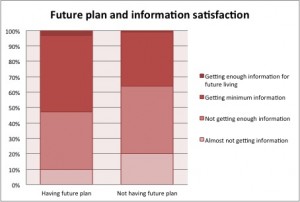Considering the benefits local lines bring to local communities

A train car featuring many characters, designed to put a smile on the faces of children, who are a symbol of the recovery.
So what benefits do train lines have for local communities? Naturally there is the service itself of transporting people around. They also contribute to tourism, local shopping districts, ensure that people not easily able to get about can do so, relieve congestion on the roads, bring communities together, promote the attractions of communities, and so on. If the sum of these benefits exceeds the costs of maintaining the line, one could rightly argue that the line should keep running.
Some universities and citizens’ groups have analyzed costs and benefits for certain lines and published their data. Wakayama University and local groups calculated that the Kishigawa line in Wakayama Prefecture produced 1.48 billion yen annually for local communities. Local groups in Ibaraki Prefecture calculated that if 2.4 billion yen of public funding was provided to Hitachi Dentetsu Co. Ltd. over 10 years the benefit for communities would come to more than 12 billion yen. Both these cases indicated that the net benefit would be more than five times the necessary public funding. Hitachi Dentetsu ceased their train operations in 2005, but the Kishigawa line, which has a cat named Tama as its stationmaster at Kishi station, has been successful in increasing passenger numbers since its change in management, despite a decreasing local population.
Of course the fate of the train lines is not decided merely by these calculations. Residents in Ibaraki Prefecture had a strong desire to keep the local line running, but Hitachi Dentetsu were also firm in their desire to discontinue the line, and Hitachi City accepted this. At the time of its discontinuation the local line transported some 1.4 million people annually, a figure which is healthy for a local line, yet it was discontinued nonetheless, with a bus service taking its place. Only some 30 percent of passengers however ended up using the bus alternative, according to an article in the April 2, 2006 edition of the Ibaraki Shimbun. The result of this change from local train to bus service was a swift decline in use of public transportation by the community.

In a relatively-large city like Hitachi, many people were able to use their own cars instead, but in areas where the population is low, the percentage of elderly is high and where snow accumulates, the switch to cars is not so easy, and some people have been left with no choice but to leave.
Sanriku Railway President Mochizuki has said that railways are essential to the recovery of areas near train lines, and local lines are expected to be an important element in the lives of local residents. Sanriku Railway has already made the decision to continue its train operations, which are expected to play a key role in moving the recovery forward, as well as showing us an example of what local communities can look like.






